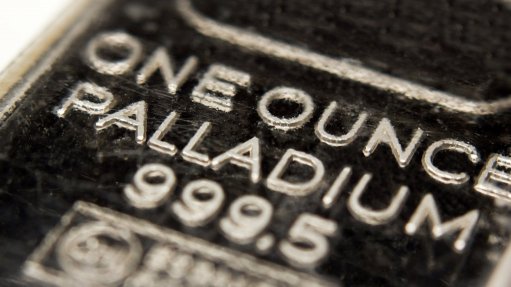
JOHANNESBURG (miningweekly.com) – Despite rising palladium prices, the Russian government will continue to exert tight control over the quantities of palladium supply exiting the country, research firm BMI said on Wednesday.
The firm warned that this would not only restrict palladium’s growth prospects, but with the country's high barriers to entry and restrictive regulation, it would also discourage foreign miners from entering the mining sector.
The Russian government holds significant stockpiles of palladium and restricts the quantity of palladium that can be exported each year.
“We expect new projects potentially coming on line in the coming years – including Urals Alluvial Platinum's Kluevsky and Volchetundra and Barrick Gold's Fedorova Tundra – to add to the minimal growth in Russia's palladium output during our 2017 to 2021 forecast period,” BMI stated.
The world’s largest palladium producer, Norilsk Nickel, and by extension Russia, continues to have sizable palladium reserves, with the former's proven and probable reserves at 97-million ounces.
“We forecast palladium output in Russia to grow from 2.9-million ounces in 2017 to 3.6-million ounces in 2026,” it stated.
This will represent average yearly output growth of 2.6% during 2017 to 2026, up from -2% year-on-year growth during 2007 to 2016.
“For the first time in over a decade, palladium prices broke through the $1 000/oz in October and overtook platinum prices,” BMI added.
Norilsk Nickel will continue to account for about 90% of Russia's palladium production; however, during the first half of this year, its palladium production remained stagnant at 1.33-million ounces, mainly as a result of lower metal content in mined ore during the first quarter.
Despite this, palladium was still the largest contributor to Norilsk Nickel's revenue, accounting for 30% of total revenue in the first half, owing to the underperformance of other metals.